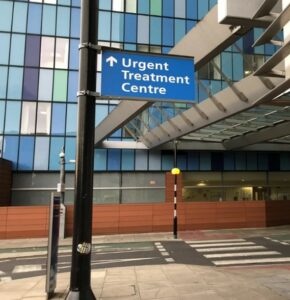Urgent treatment centres
Urgent tre atment centres (UTCs) provide urgent medical help when it’s not a life-threatening emergency.
atment centres (UTCs) provide urgent medical help when it’s not a life-threatening emergency.
Open at least 12 hours a day, every day, UTCs offer appointments that can be booked through NHS 111 (telephone and online) and are equipped to investigate, diagnose, and deal with many of the most common injuries and illnesses people attend Emergency Departments (A&E) for.
People who go to a UTC are typically:
- mobile and able to move around
- in need of same day treatment.
People may also need some investigative tests to be carried out while they are in the UTC.
Find out more about when to visit a UTC.
UTCs were introduced in 2017 with the aim of standardising the range of urgent care services including walk in centres, minor injury units and urgent care centres.
In 2023, The Delivery Plan for recovering urgent and emergency care services set out the expectation that UTCs increasingly be co-located with emergency departments (A&E); helping to ease the pressure on emergency departments and enabling emergency medicine specialists to focus on those patients who are seriously unwell.
This does not mean all UTCs are on hospital sites, with some located within the local community.
UTCs also work alongside other parts of the urgent care network including primary care, community pharmacists, ambulance and other community-based services to provide a locally accessible and convenient alternative to emergency departments for patients who do not need to attend hospital.
The UTC Principles and Standards set out the minimum service that UTCs are expected to provide. As a priority, UTCs are expected to:
- open 7 days a week, 12 hours a day as a minimum
- see both booked and walk-in patients
- see both minor injuries and minor illnesses
- see patients of all ages, including children under 2
- have a basic consistent investigative and diagnostic offering on site (with clear pathways if these are not available in the UTC)
- accept appropriate ambulance arrivals
- have access to patient records
- clearly communicate what the service is for via consistent urgent treatment centre signage, to ensure everyone understands the service.
Watch this short animation to find out more about urgent treatment centres and the role they play within the urgent and emergency care system:
Guidance and resources:
- The guidance for implementing UTCs can be found on our UTC principles and standards webpage.
- View some of the frequently asked questions to support implementation.
